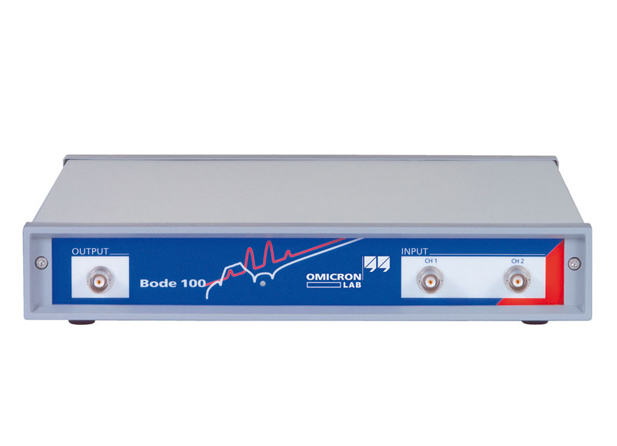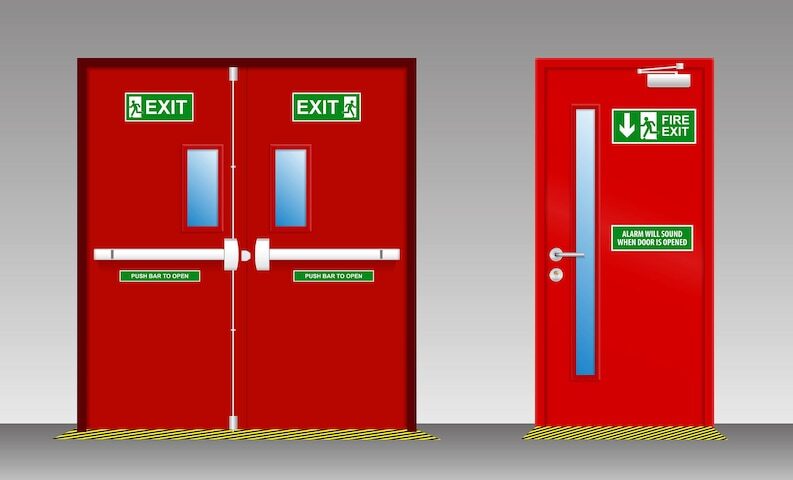Are you ready to dive into the fascinating world of troubleshooting with a Vector Network Analyzer? Whether you’re an electronics enthusiast, a seasoned engineer, or someone who just wants to understand how this powerful tool works, you’ve come to the right place. In this blog post, we’ll take you on a journey through the ins and outs of VNAs, exploring their components, calibration process, and various techniques for troubleshooting. So buckle up and get ready to unravel the mysteries of the Vector Network Analyzer!
What is a Vector Network Analyzer (VNA)?
A Vector Network Analyzer, often abbreviated as VNA, is a powerful electronic test instrument used to measure the performance of electrical networks. It provides comprehensive insights into the behavior of complex transmission and reflection characteristics of these networks across a wide frequency range.
At its core, a VNA consists of several key components that work together harmoniously to deliver accurate measurements. These include signal generators, receivers, directional couplers, and detectors. The signal generator generates high-frequency signals that are sent through the network under test. The receiver captures the reflected or transmitted signals from the network, while directional couplers ensure proper power splitting between the input and output ports.
Calibration is an essential step in using a VNA effectively. By calibrating the analyzer against known reference standards at various frequencies and power levels, we can eliminate systematic errors introduced by cables, connectors, adapters, and other components in our measurement setup.
With its ability to measure parameters such as impedance (magnitude and phase), insertion loss/gain (S21), return loss (S11), and group delay in both time domain and frequency domain representations; VNAs enable us to troubleshoot issues with utmost precision.
In troubleshooting scenarios with VNAs , one must first identify any discrepancies between measured data and expected results. This could involve investigating unexpected return losses or insertion losses that may indicate faulty components or damaged connections within our network under test.
To further diagnose issues accurately with VNAs , advanced techniques like Smith chart analysis can be employed.
This allows us to visualize complex impedance values on a polar plot for better understanding of reflections or mismatches occurring within our circuits.
In addition,VNAs also offer time-domain analysis capabilities which help pinpoint transient behaviors like ringing or distortion in high-speed digital systems.
The versatility offered by VNAs makes them indispensable tools for engineers working across industries such as telecommunications,Radio Frequency(RF) design,and aerospace amongst others.
Components of a VNA
A Vector Network Analyzer (VNA) is a powerful tool used in the field of RF and microwave engineering to measure and analyze the behavior of electrical networks. It consists of several key components that work together to provide accurate measurements.
There are the test ports or connectors, which allow you to connect your device under test (DUT) to the VNA. These connectors can be SMA, N-type, or other types depending on the frequency range and application.
Next, we have the signal generator, which generates an RF signal that is then applied to the DUT. This allows for precise control over frequency and power levels during testing.
The receiver is another important component of a VNA. It captures and measures the signals reflected or transmitted by the DUT, providing crucial information about its impedance characteristics.
To ensure accurate measurements, VNAs also incorporate calibration kits. These kits consist of precision standards such as open circuits, short circuits, and matched loads that are used to calibrate the system before taking measurements.
Lastly but not least important is the display unit or software interface where measurement results are displayed graphically in various formats like magnitude/phase plots or Smith charts.
Each component plays a vital role in enabling precise measurements with a Vector Network Analyzer. Understanding how these components work together will help troubleshoot any issues that may arise during testing and ensure reliable results for your RF design applications
Understanding Calibration
Calibration is an essential step in using a Vector Network Analyzer (VNA) effectively. It ensures accurate and reliable measurements by accounting for any systematic errors or discrepancies that may occur during testing.
To understand calibration, let’s break it down into its components. The first step is the “open” calibration, where the VNA measures the response of an open circuit to establish a reference point. This helps compensate for any inherent impedance mismatch within the analyzer.
Next comes the “short” calibration, which involves measuring the response of a short circuit. This allows for correction of reflection errors caused by imperfect connections or cable length differences.
The third component is known as “load” calibration, where a matched termination load is measured to account for variations in loss and phase shift across different frequencies.
There’s “thru” calibration, which involves connecting two cables together to measure their combined transmission characteristics accurately.
By understanding these calibrations and applying them correctly before taking measurements with your VNA, you can ensure precise results and minimize measurement uncertainties when troubleshooting your RF circuits or devices.
Remember that proper calibration requires attention to detail and following manufacturer guidelines closely. Take time to familiarize yourself with your specific VNA model and its recommended procedures for optimal performance. With accurate calibrations in place, you’ll be well-equipped to troubleshoot effectively using your Vector Network Analyzer!
Troubleshooting Basics with a VNA
When it comes to troubleshooting with a Vector Network Analyzer (VNA), there are some basic steps you can follow to identify and resolve issues. Here, we will explore these fundamentals to help you navigate the troubleshooting process effectively.
First and foremost, it is important to have a clear understanding of the measurements you are trying to make. This involves knowing the expected characteristics of your device under test (DUT) and what parameters you need to analyze using the VNA. By having this knowledge, you can compare your measured results against the expected values and pinpoint any discrepancies.
Next, ensure that your VNA is properly calibrated before taking any measurements. Calibration eliminates errors caused by cables, connectors, and other components in the measurement setup. It establishes a reference plane from which accurate measurements can be made. Be sure to follow manufacturer guidelines for calibration procedures specific to your VNA model.
Once calibrated, take initial measurements of known devices or reference standards as a sanity check. This allows you to verify that your VNA is functioning correctly before moving on to testing unknown devices or circuits.
During troubleshooting, pay attention not only to magnitude but also phase information provided by the VNA. Phase shift can reveal issues such as impedance mismatches or faulty connections that may not be apparent from magnitude alone.
If unexpected results are observed during measurement sweeps, break down the problem into smaller sections for analysis. Isolate individual components or subsections within your circuitry and measure their performance separately using appropriate fixtures or adapters. This step-by-step approach helps narrow down potential sources of error more efficiently.
In addition to visual inspection of physical connections for loose cables or damaged connectors, consider utilizing advanced features offered by modern VNAs like time domain analysis or Smith chart displays for deeper insights into signal behavior at different frequencies.
Remember that troubleshooting requires patience and persistence; it may involve multiple iterations of adjustments and re-measurements until satisfactory results are obtained. Don’t be discouraged by initial setbacks; instead, view them as opportunities
Common Issues and Solutions
When working with a Vector Network Analyzer (VNA), you may encounter some common issues that can affect the accuracy of your measurements. One issue you might face is impedance mismatches, which occur when there is a difference in impedance between the device under test and the VNA. This can lead to reflections and inaccurate readings. To solve this problem, you can use matching networks or adapters to ensure proper impedance matching.
Another common issue is cable losses, which can introduce signal attenuation and distortions. To overcome this challenge, it’s important to use high-quality cables with low loss characteristics. Additionally, regularly inspecting cables for any damage or wear and tear is crucial.
Interference from external sources such as electromagnetic radiation or nearby electronic devices can also impact VNA measurements. Shielding the testing environment by using metal enclosures or conducting tests in an isolated area can help minimize these interferences.
Calibration errors are another potential issue that needs attention. Performing regular calibrations helps maintain accurate measurements by accounting for any systematic errors introduced by the VNA itself or its components.
Software-related issues like firmware bugs or compatibility problems may arise while operating a VNA. In such cases, updating the firmware to the latest version or contacting technical support for assistance could be helpful solutions.
By addressing these common issues proactively and implementing appropriate solutions, you can troubleshoot effectively with your Vector Network Analyzer to achieve accurate measurement results every time!
Advanced Techniques for Troubleshooting
When it comes to troubleshooting with a Vector Network Analyzer (VNA), there are some advanced techniques that can help you solve even the most complex issues. These techniques go beyond the basics and require a deeper understanding of how VNAs work.
One advanced technique is known as Time Domain Analysis. This involves using the VNA to analyze signals in the time domain instead of just the frequency domain. By examining how signals change over time, you can gain valuable insights into issues such as signal reflections, impedance mismatches, and other anomalies.
Another powerful technique is called S-parameter analysis. S-parameters describe how an electrical network responds to signals at its input ports. By analyzing these parameters, you can determine important characteristics like insertion loss, return loss, and phase shift.
In addition to these techniques, there are also specialized measurements that can be performed with a VNA. For example, one such measurement is Distance-to-Fault (DTF) analysis which allows you to locate faults or anomalies along a transmission line by measuring reflected energy.
Furthermore, Advanced Calibration methods can greatly enhance your troubleshooting capabilities with a VNA. Calibration ensures accurate measurements by accounting for errors introduced by cables and connectors. Some VNAs offer advanced calibration options such as TRL (Thru-Reflect-Line) calibration which provides highly accurate results even when dealing with non-coaxial components.
By utilizing these advanced techniques and measurements, you’ll be able to tackle challenging troubleshooting scenarios more effectively with your Vector Network Analyzer.
Remember that practice makes perfect when it comes to mastering these advanced techniques! Experimenting with different setups and configurations will help deepen your understanding of their applications and increase your proficiency in troubleshooting complex issues. So don’t be afraid to dive in and explore all that your VNA has to offer!
Conclusion
In today’s fast-paced and ever-evolving world of technology, a Vector Network Analyzer (VNA) is an essential tool for troubleshooting and analyzing complex networks. Its ability to measure the magnitude and phase of signals across different frequencies makes it invaluable in various industries such as telecommunications, aerospace, and electronics.
Throughout this article, we have explored the components of a VNA, delved into the intricacies of calibration, and discussed troubleshooting basics. We have also addressed common issues that may arise when using a VNA and provided effective solutions. Additionally, we touched on advanced techniques that can further enhance your troubleshooting capabilities with a VNA.
By understanding how to effectively use a VNA, you can save time and resources by quickly identifying problems within your network or system. Whether it’s diagnosing signal integrity issues or identifying faulty components, a VNA empowers engineers and technicians to make informed decisions that ensure optimal performance.
As technology continues to advance at breakneck speed, it is crucial for professionals in various industries to stay updated with the latest tools and techniques available. A Vector Network Analyzer offers unparalleled precision in characterizing microwave devices while providing valuable insights into network behavior.
So whether you are working on designing cutting-edge communication systems or conducting research in RF engineering laboratories – mastering the art of troubleshooting with a VNA will undoubtedly elevate your work quality.
Remember: Practice makes perfect! As you gain more experience using a Vector Network Analyzer, experimenting with different calibration methods and exploring advanced techniques will further sharpen your skills. Embrace challenges as opportunities for growth!












